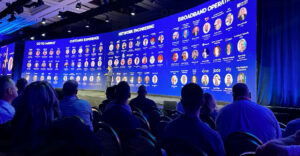
Despite dissent in some quarters of the television and cable broadcasting community, the Federal Communications Commission on Tuesday voted to allow the use of open broadcast television spectrum to provide broadband data and other services to consumers and businesses.
However, the wireless devices needed to implement those services are not yet available.
Cautious Approach
The FCC’s order appears to take into account incumbent broadcasters’ concerns that these new devices will trample on their spectrum.
For instance, both fixed and personal/portable unlicensed devices must include a geolocation capability and provisions to access over the Internet a database of the incumbent services in addition to spectrum-sensing technology. The database will tell the white space device what spectrum may be used at that location — ensuring that no disruption of established service will occur.
All white space devices will be subject to equipment certification by the FCC Laboratory. The FCC will also permit certification of devices that rely solely on spectrum-sensing to avoid causing harmful interference — but they will be subject to a much more rigorous approval process.
The locations where wireless microphones are used, such as sporting venues and event and production facilities, can be registered in the database and will be protected in the same way as other services. The FCC also established that these devices must be able to listen to the airwaves to sense wireless microphones as an additional measure of protection.
Applications will be released for public comment prior to agency action. The devices will be tested by the FCC’s laboratory to a “proof of performance” standard both in the lab and in a variety of real-world environments; for now, the FCC said, certification of any such device will require approval by the full Commission.
By and large, white space proponents are cheering the FCC decision. “It is a good order,” Jake Ward, spokesperson for the Wireless Innovation Alliance, told TechNewsWorld. “It is what we expected. We understand why the Commission is being cautious as it moves forward.” The Alliance, which includes Google, Motorola, Dell and Microsoft, is a coalition of firms advocating for the use of white spaces.
Still, the FCC left out details that at least some of the interested vendors would have liked to receive.
“We were happy to see the FCC move forward, but there weren’t a lot of specifics about the rules at the meeting yesterday,” Steve Sharkey, Motorola’s senior director of regulatory and spectrum policy, told TechNewsWorld.
In earlier statements, the FCC had mentioned specific wattage levels for fixed and portable devices, he noted. “They did not give that same level of specificity at the meeting or at the press conference that followed. The assumption is that the framework is similar, but we won’t know until we see the actual item itself.” That could take several days.
Still, the permission to move forward in this area represents a new opportunity for both vendors and customers, Sharkey said.
Competitive Landscape
Motorola is well positioned to move forward, according to Sharkey, especially now that it has been definitively established that geolocation is the primary means of providing protection.
“We have been developing products along those lines for some time and can move quickly to put these devices into the market,” he said, adding that the market will likely see the first device within a year, followed by another year in which a broader array of applications and devices will emerge.
“There are a lot of different applications manufacturers are looking at,” said Sharkey. Motorola, for example, has focused on providing broadband to rural areas using a fixed point to multipoint configuration. Mobile users are another target of many vendors.
Indeed, rural users are likely to be the first beneficiary of the FCC decision, Esme Vos, the founder of MuniWireless.com, told TechNewsWorld. “The rules will allow vendors to start to experiment with wireless devices on a relatively cost-effective basis. They can targets those parts of the market where people do not have much choice of broadband service.”
No Fixed Image
Beyond these ruminations, though, it is difficult to identify a specific killer app that will result from the FCC’s action, Ryan Radia, an analyst with theCompetitive Enterprise Institute, told TechNewsWorld. “What is certain, though, is that we will soon see a range of consumer devices come to market, complete with Internet connectivity and geolocation capability.
“The proliferation of white space devices is sure to change the dynamic of America’s broadband marketplace, potentially giving consumers more options for high-speed Internet service,” Radia said.
Some things are already apparent, he continued. “Since the FCC has ordained that all devices and networks operating on white space frequencies must share the same slice of spectrum, nationwide networks like Sprint’s EVDO network or AT&T’s HSDPA network — both of which operate on licensed bands — aren’t likely to be built around white space devices. Other frequency ranges, such as the 700 MHz band recently auctioned off by the FCC, are the most promising homes for Internet services able to compete with incumbent wireline broadband providers.”
No Rush
Consumers should not expect an onslaught of devices and services as a result of the FCC action on Tuesday, cautioned Sharon Strover, a professor of Communication at the University of Texas at Austin.
“In these economic times, I am skeptical that there will be a rush to market,” she told TechNewsWorld.
While a great deal of innovation is sure to come from white space devices Radia acknowledged that unlicensed spectrum does have a cost. “Even greater innovations may never see the light of day.”
When no one actually owns spectrum, conflicts are inevitable — as the recent scuffle between broadcasters and pro-white space technology firms illustrated. “Auctioning off the white spaces would have been a far better path toward long-term innovation,” suggested Radia.




















































